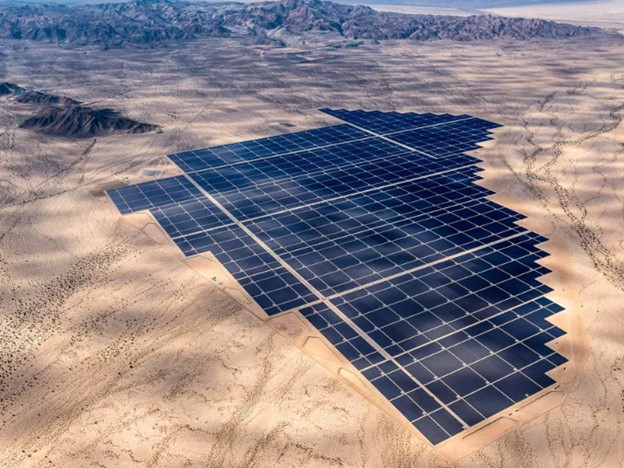A couple years ago a little-noticed report called, “Beyond Carbon-Free: A Framework for Purpose-Led Renewable Energy Procurement and Development” was published by an energy company in Seattle, together with the Nature Conservancy and the National Audubon Society. It suggested that the goal of net-zero carbon emissions would require “massive areas of land for development,” perhaps “a footprint of 228,000 square miles – a land area greater than that of Wyoming and Colorado, combined.”
With a gift for understatement, the authors wrote that “This tremendous need for land poses significant land-use challenges, and the potential for unintended consequences on both local communities and natural habitats.” Oh well, the report said, “In today’s rapidly evolving energy landscape, this transition looks more achievable than ever.” Its writers were already aboard the federal plan to halt America’s use of oil and gas, and if that means covering rural areas with wind machines and solar panels, well, who needs Wyoming anyway?
Local officials have long understood the problems of renewable energy – especially the footprint required, always in rural areas. A $200 million solar project near Culpepper, Virginia finally had to give up because officials would not waive their local ordinance restricting solar panel installations to 300 acres. Voters there value their rural and agricultural history and culture and had no desire for a 1700-acre solar field to replace farms in order to provide power to distant cities.
What community chooses to be sacrificed for anyone’s national political agenda? Dozens of towns and counties in Kansas are gearing up for an extended controversy over a Department of Energy plan to acquire (by eminent domain if necessary) a 5-mile-wide, 780-mile-long “National Interest Transmission Corridor,” a series of power lines to connect wind and solar installations out West to the Midwest power grid. The new super-powerlines would cross much of Kansas, Missouri, Illinois, and Indiana and at 5 miles wide would consume almost 4,000 square miles, apparently without the approval of states or counties. It is but one of at least a dozen such corridors the feds are planning.
Americans may say they really want to switch to renewables, but where should such massive installations be located? In whose backyard? In my view, historic rural communities surrounded by productive farmland are a poor choice for massive arrays of solar panels. And make no mistake – they need to be massive to make a dent in replacing the energy America gets from fossil fuel power plants.

When I was at the Colorado Department of Natural Resources, our experts estimated that the solar panels required to power the entire City of Denver would cover at least two counties, clearly unrealistic. A similar power industry estimate said powering Metropolitan New York with solar panels would require covering an area as large as Arizona. Even though they have perhaps the best sun resource in the U.S., nobody ever asked the people of Arizona if they would sacrifice their State to benefit New York. In fact, wherever large solar installations are proposed, local opposition is fierce.
The Bureau of Land Management has decided it can help solve that problem by making vast stretches of public lands available for leasing – not for oil and gas, but for solar projects. Giant solar projects, or as BLM calls them, “utility-scale.” The agency has published its required Environmental Impact Statement, which proposes opening almost 32 million acres (50,000 square miles) across 11 western states for utility-scale solar projects. That’s equivalent to the entire State of New York, more than all the land in North Carolina or Alabama. In fact, 20 states and territories are smaller than 50,000 square miles.
As an aside, the specific uses of BLM land authorized by its governing statute, the Federal Land Policy Management Act of 1976, do not include massive wind and solar installations. But no matter, the Administration’s agenda is to eliminate the use of oil and gas, the will of the people and their elected representatives notwithstanding.
The territory proposed for solar projects includes most of Nevada, giant swaths of Utah and Wyoming, southeast Oregon and southwest Idaho, and sections of Western Colorado that include much of Moffat, Rio Blanco, Garfield, and Mesa Counties. Nearly 600,000 acres in Colorado would be open to massive fields of solar panels, three times more than would be available in California.
These rural areas are not, of course, where all that renewable power would be needed or used. That’s why renewable advocates have always dreaded the accompanying need for powerlines – which they generally oppose. So, that’s why they must now rely on government power to take so much more land to build transmission lines to get that electricity to the giant cities that need it.
One might ask, why can’t they just build the wind and solar power systems near New York, Chicago, Los Angeles, Miami, and Houston if that’s where the power is needed? There is one simple reason the government cannot make that happen – it doesn’t own the land there.




Comments on this entry are closed.